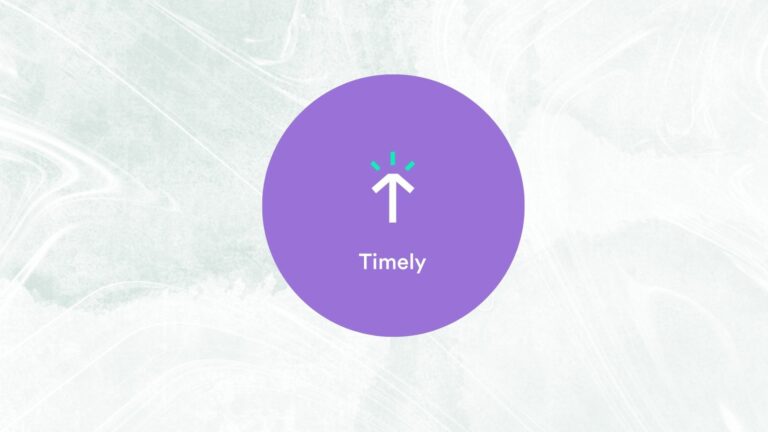If you tell an old-school salesperson that you do or plan to do remote sales, they’ll probably think you’re crazy.
“Really? You want to sell to people without meeting them in person, right? That will not work right. You’re not getting anywhere.”
Well, the truth is that it works very well. And sales are going crazy because of it.
Salesloft says that ten inside/remote sales reps are being hired for every outside/field sales rep that is being hired right now.
Now, whether you’ve chosen remote sales over field sales on purpose or you have to stay home because of a nasty virus, we’ve put together a guide to help you do it better.
This guide talks about:
Table of contents
What is remote selling?
“It is not your customer’s job to remember you. It is your obligation and responsibility to make sure they don’t have the chance to forget you.”
When you do remote sales, you and the person you are trying to sell to are never in the same place at the same time.
It’s clear that a big part of your sales process could be done from afar, and you might only meet with the client once or twice during the process.
But for the purposes of this guide, we’ll focus entirely on remote sales
How to sell remotely like a pro
Now let’s see how you can deal with the difficulties of remote sales successfully while capitalizing on its advantages.
Be as personable as possible
If people meet you through a screen, make sure they can see the person behind it. Make a connection.
On the other hand, we all know what happens when someone reads a Facebook comment, reacts to it, forgets that there’s a person on the other end, and becomes a rude keyboard warrior. There are things said that probably wouldn’t have been said in person.
Here are a few things you can do to be as friendly as possible:
- Use video calling instead of the phone, and always have your video on, even if it’s just for the beginning of the call (internet connections can be bad). It makes the conversation feel friendlier.
- Be yourself and a little less formal than you would be in person. Set aside a little time to chat. It’s good to make up a little for how hard it is to make a personal connection when you’re far away.
- Instead of sending emails between video calls, try using chat or SMS texting. It makes bonds much stronger because of how it can be used.
- If you have to call without video anyway, make sounds that show what you’re doing, like laughing when you’re happy, saying “hmm” when you’re thinking, etc., to make the connection stronger. Make use of your tone of voice a lot.
- Try out tools like Bonjoro to switch out some of your text messages for video messages. It will get a lot more people involved.
Closely track your customers’ interest and interactions
When you’re talking online and can’t really look each other in the eyes, you need to find other ways to read your prospects’ body language.
This is where technology for tracking comes in. It lets you read the “digital body language” of your prospects.
Here’s what could happen:
- You can keep track of when prospects open and click on links in emails.
- You can keep track of when they visit your website, what pages they look at, and for how long. (Is it the page with the prices? So far, so good!)
- You can use tracking in documents and proposals in the same way.
- And finally, you can get real-time alerts when these things happen, so you can take the right next steps at the right time.
Keep building your relationship via social media
Some salespeople go to the country club to make connections. If you’re selling from a distance, you’ll probably also need to do this online. Social media is like a virtual country club for you.
Where to begin? Just talk to your customers and prospects on LinkedIn, Facebook, and/or Twitter. Whatever makes the most sense for your business or clients.
Then you can talk to them in a friendly way. Ask for feedback. Share content that is helpful on your feed. And if you think of something that will help a particular person, tell them directly. (But don’t send a lot of this kind of message.)
Be friendly and willing to help. As much as possible, treat your online friends like real friends.
We try to talk to every person who signs up for Tackle. Don’t believe us? Just start a trial and count the minutes until we schedule a demo with you.
Organize your meetings & process with maximum efficiency
Want to make the most of your remote sales?
Here are some things to think about:
- If you have a lot of meetings, Tackle has got you covered. You can use Tackle to set up a meeting, it cuts down on the amount of email you have to send. And no one minds that people use the link. I always say, “You can pick a good time to talk via…” and then give my link.
- Use software like Fireflies that does the typing for you. It automatically records and transcribes your calls and brings out important insights and sentiment analysis from your calls.
- Set up automatic reminders in your meeting scheduler. By sending a reminder an hour before the meeting, I’ve cut down on the number of people who don’t show up.
- Use a personal link for video calling software. This lets you add that link to your tool for automatic scheduling. Just go to that link when the meeting starts. Easy!
- On the other hand, some video calling tools, like Google meets, let you make a room for each prospect. There, you can share documents with them and use it as your own meeting room. On top of that, Tackle works natively with your Google Calendar— your meeting and events will automatically get synced and tagged and you can see where you’ve spent most of your time and how much you’ve earned.
Build daily habits around sales activity
When you work from home, do you find it hard to stay on track?
The best way to fix this is to start doing things every day. Once you have these habits, it will be a lot easier to stay on track, even if you don’t feel like it on a certain day.
Focus on following up with x customers per day, making x calls, making x new opportunities,… How your sales process works will tell you what makes the most sense.
You could try setting these goals with your sales manager. Your manager might even set sales goals based on how much you put in, and it’s good when they match up. So, let’s move on to the next point…
How to manage a remote sales team
Set clear goals & manage on input-level sales goals first
Want your salespeople to stay on track when they’re working from home? (You got it. This is the same point I just made, but from the point of view of a sales manager.)
Making goals clear will help. So, your salespeople will know exactly what you want from them.
A word of warning, though: you might think of sales goals right away, but it’s unlikely that setting these alone will keep your sales team motivated. Seeing steady progress is what keeps them going, even if deals only close every so often.
Setting input-level goals or quotas is the best way to solve this problem. This could be:
- number of calls made
- number of meetings planned
- how many meetings were held
- how many emails were sent
Make the team coachable by sharing everything in one place
As a sales manager, one of your most important jobs, if not the most important, is to coach your sales team. (Here, you can read a lot more about sales management.)
Besides keeping track of the numbers (as I said in my last point), you’ll need to know what your team is saying to your prospects. If they don’t, you can’t help them get better.
The best thing to do is to start sharing everything in the same place. You can also ask your sales reps to copy you on every email, but your mailbox will be full and you’ll still miss some of what’s going on.
Get a CRM that keeps track of all your conversations with prospects, like emails, meetings, phone calls, and notes, and how they interact with your emails and website (using tracking).
Organize weekly sales pipeline reviews (& daily stand-up meetings)
Many of our customers meet with their sales teams once a week or twice a week to talk about the sales pipeline.
Here are some advantages::
- You can agree with prospects on the next steps to take.
- You can check the pipeline to make sure that everything is up to date. You could change an opportunity’s stage, chance, or value. Or get rid of it if it is no longer important. This will give a better overall picture and make it easier to predict income.
- If there are any other problems, they can be found and talked about.
If you want to take it one step further, you can add daily stand-up meetings, which are common in tech startups and software development environments. Talk about what you did yesterday and what you plan to do today.
Stand-up meetings make it clear what everyone is doing, make it easier for the team to talk to each other, and give you a chance to think about what you’ve done and what you’re going to do.


